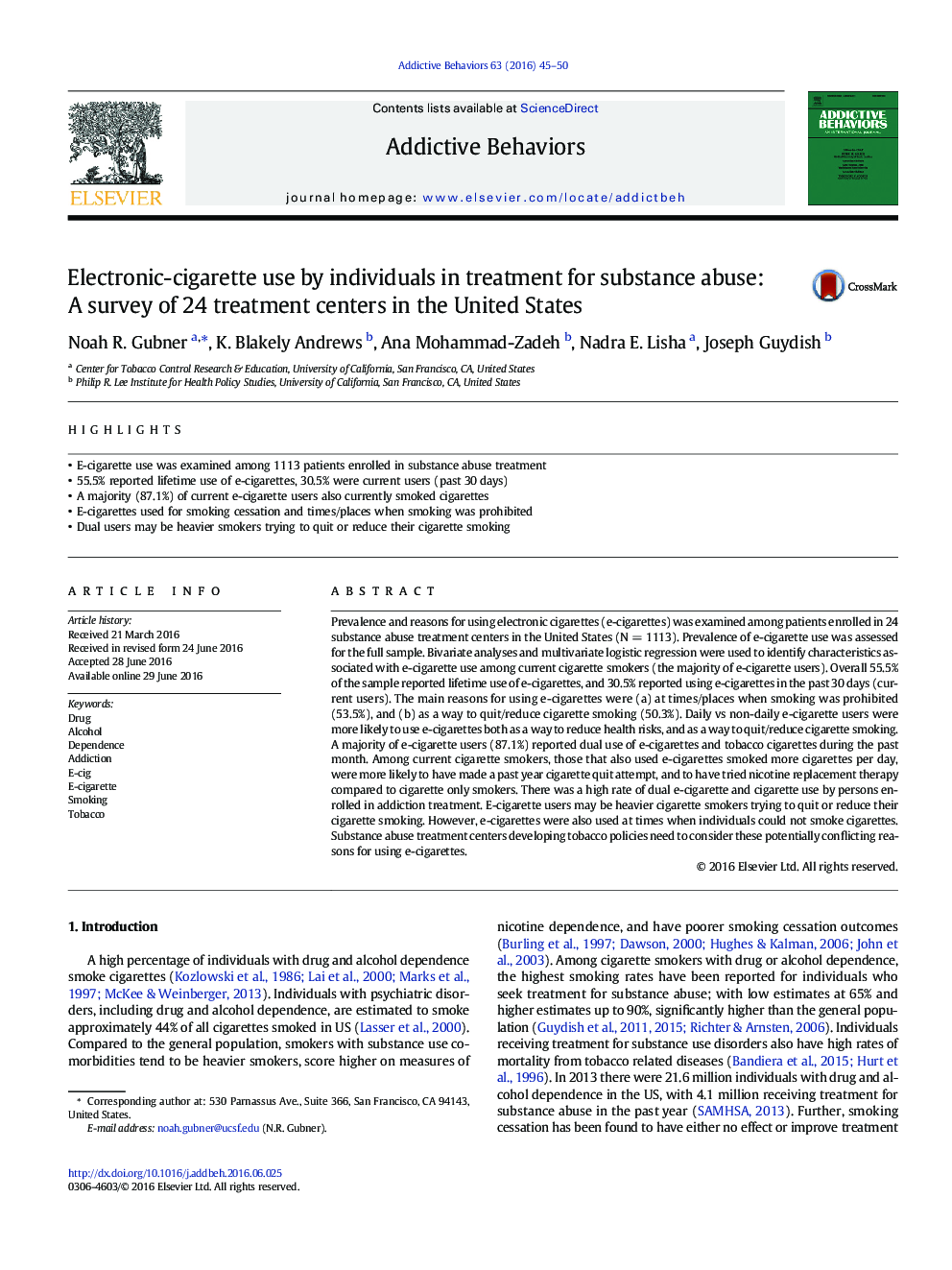| Article ID | Journal | Published Year | Pages | File Type |
|---|---|---|---|---|
| 898560 | Addictive Behaviors | 2016 | 6 Pages |
•E-cigarette use was examined among 1113 patients enrolled in substance abuse treatment•55.5% reported lifetime use of e-cigarettes, 30.5% were current users (past 30 days)•A majority (87.1%) of current e-cigarette users also currently smoked cigarettes•E-cigarettes used for smoking cessation and times/places when smoking was prohibited•Dual users may be heavier smokers trying to quit or reduce their cigarette smoking
Prevalence and reasons for using electronic cigarettes (e-cigarettes) was examined among patients enrolled in 24 substance abuse treatment centers in the United States (N = 1113). Prevalence of e-cigarette use was assessed for the full sample. Bivariate analyses and multivariate logistic regression were used to identify characteristics associated with e-cigarette use among current cigarette smokers (the majority of e-cigarette users). Overall 55.5% of the sample reported lifetime use of e-cigarettes, and 30.5% reported using e-cigarettes in the past 30 days (current users). The main reasons for using e-cigarettes were (a) at times/places when smoking was prohibited (53.5%), and (b) as a way to quit/reduce cigarette smoking (50.3%). Daily vs non-daily e-cigarette users were more likely to use e-cigarettes both as a way to reduce health risks, and as a way to quit/reduce cigarette smoking. A majority of e-cigarette users (87.1%) reported dual use of e-cigarettes and tobacco cigarettes during the past month. Among current cigarette smokers, those that also used e-cigarettes smoked more cigarettes per day, were more likely to have made a past year cigarette quit attempt, and to have tried nicotine replacement therapy compared to cigarette only smokers. There was a high rate of dual e-cigarette and cigarette use by persons enrolled in addiction treatment. E-cigarette users may be heavier cigarette smokers trying to quit or reduce their cigarette smoking. However, e-cigarettes were also used at times when individuals could not smoke cigarettes. Substance abuse treatment centers developing tobacco policies need to consider these potentially conflicting reasons for using e-cigarettes.
